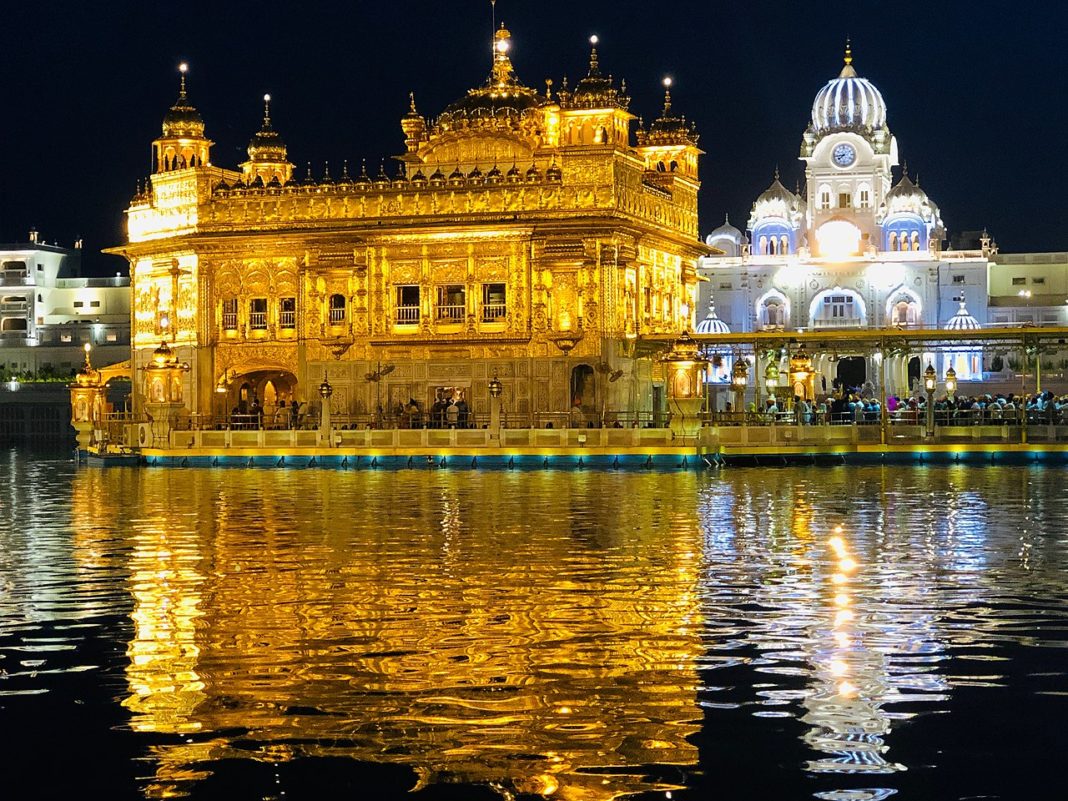The Golden Temple is an open house of worship for all people, from all walks of life and faiths. It has a square plan with four entrances, and a circumambulation path around the pool. The four entrances to the gurudwara symbolise the Sikh belief in equality and the Sikh view that all people are welcome in their holy place. The complex is a collection of buildings around the sanctum and the pool. One of these is Akal Takht, the chief center of the religious authority of Sikhism. Additional buildings include a clock tower, the offices of the Gurdwara Committee, a Museum and langar – a free Sikh community–run kitchen that offers a vegetarian meal to all visitors without discrimination. Over 150,000 people visit the holy shrine every day for worship. The Gurdwara complex has been nominated as a UNESCO World Heritage Site, and its application is pending on the tentative list of UNESCO.
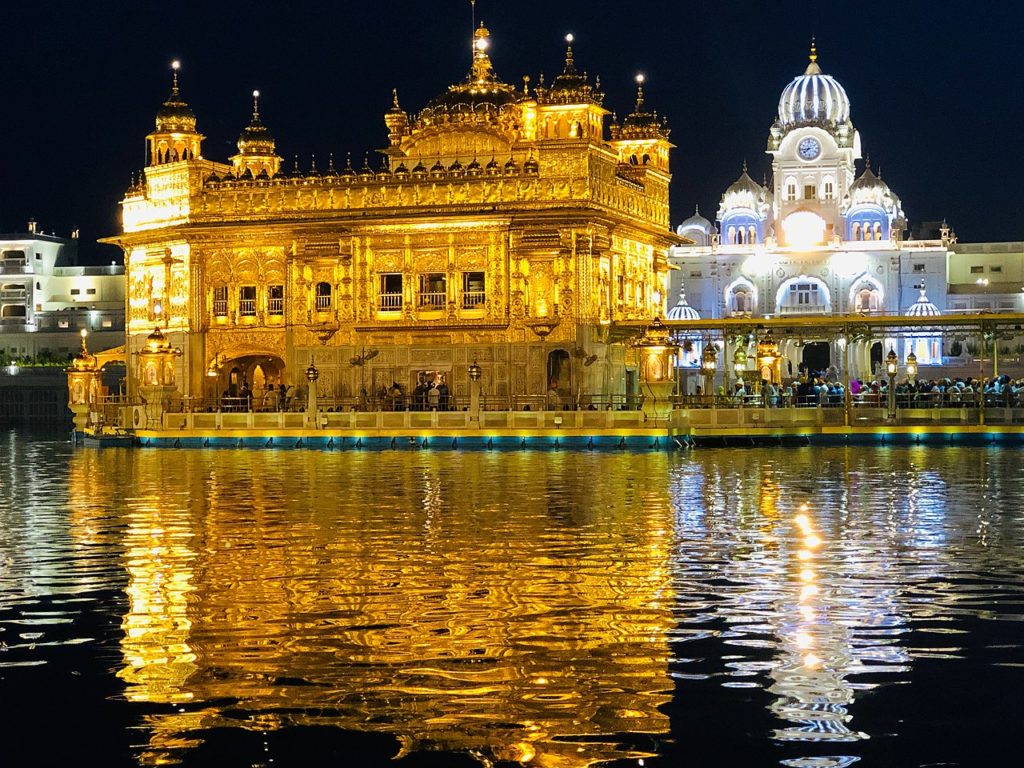
The man-made pool on the site of the temple was completed by the fourth Sikh Guru, Guru Ram Das, in 1577. The Gurdwara was repeatedly rebuilt by the Sikhs after it became a target of persecution and was destroyed several times by the Mughal and invading Afghan armies. Maharaja Ranjit Singh, after founding the Sikh Empire, rebuilt it in marble and copper in 1809 and overlaid the sanctum with gold leaf in 1830. This has led to the name the Golden Temple.
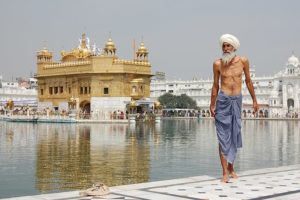
The sanctum is a 12.25 x 12.25 meter square with two storeys and a gold leaf dome. This sanctum has a marble platform that is 19.7 x 19.7-meter square. It sits inside an almost square (154.5 x 148.5 m2) pool called amritsar or amritsarovar (amrit means nectar, sar is short form of sarovar and means pool). The pool is 5.1 meters deep and is surrounded by a 3.7 meter wide circumambulatory marble passage that is circled clockwise. The sanctum is connected to the platform by a causeway and the gateway into the causeway is called the Darshani Ḍeorhi (from Darshana Dvara). For those who wish to take a dip in the pool, the Temple provides a half-hexagonal shelter and holy steps to Har ki Pauri. Bathing in the pool is believed by many Sikhs to have restorative powers, purifying one’s karma. Some carry bottles of pool water home, particularly for sick friends and relatives. The pool is maintained by volunteers who perform kar seva (community service) by draining and desilting it periodically.
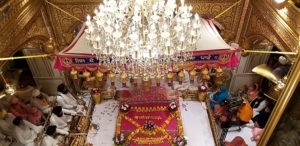
The sanctum has two floors. The Sikh Scripture Guru Granth Sahib is seated on the lower square floor for about 20 hours every day, and for 4 hours it is taken to its bedroom inside Akal Takht with elaborate ceremonies in a palki, for sukhasana and Prakash. The floor with the seated scripture is raised a few steps above the entrance causeway level. The upper floor in the sanctum is a gallery connected by stairs. The ground floor is lined with white marble, as is the path surrounding the sanctum. The sanctum’s exterior has gilded copper plates. The doors are gold leaf-covered copper sheets with nature motifs such as birds and flowers. The ceiling of the upper floor is gilded, embossed, and decorated with jewels. The sanctum dome is semi-spherical with a pinnacle ornament. The sides are embellished with arched copings and small solid domes, the corners adorning cupolas, all of which are covered with gold leaf-covered gilded copper.
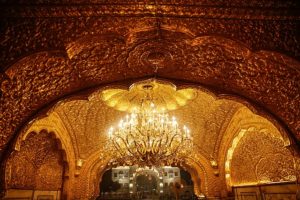
The Golden Temple Amritsar India (Sri Harimandir Sahib Amritsar) is not only a central religious place of the Sikhs, but also a symbol of human brotherhood and equality. Everybody, irrespective of caste, creed, or race can seek spiritual solace and religious fulfillment without any hindrance. It also represents the distinct identity, glory, and heritage of the Sikhs.
According to Wikipedia





